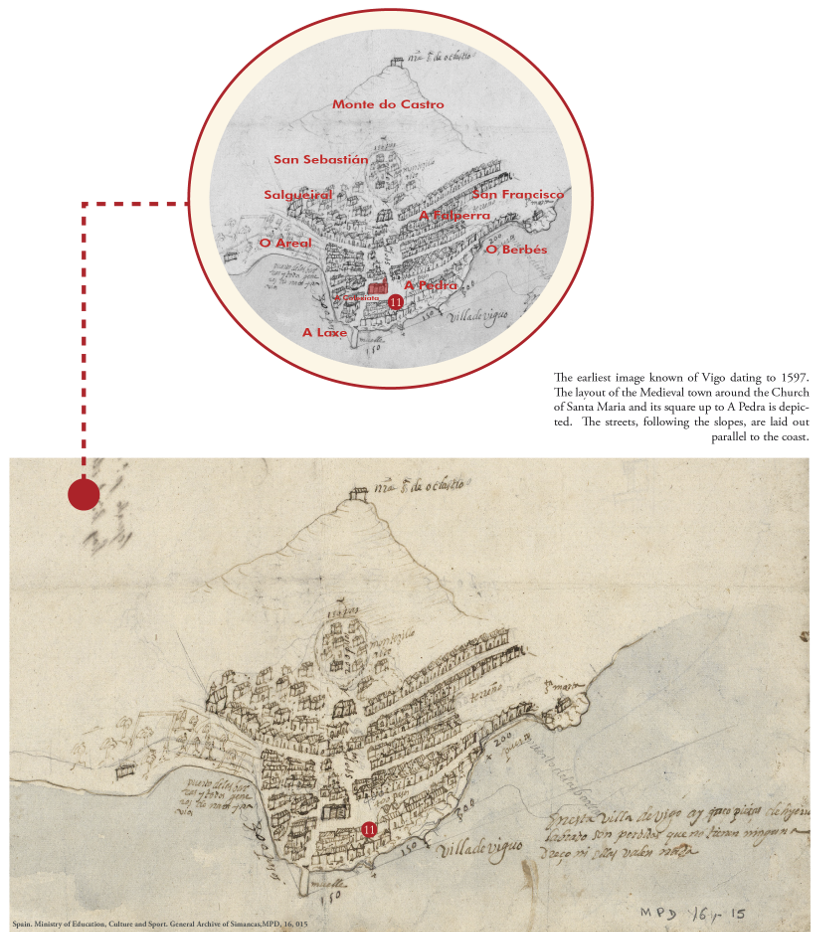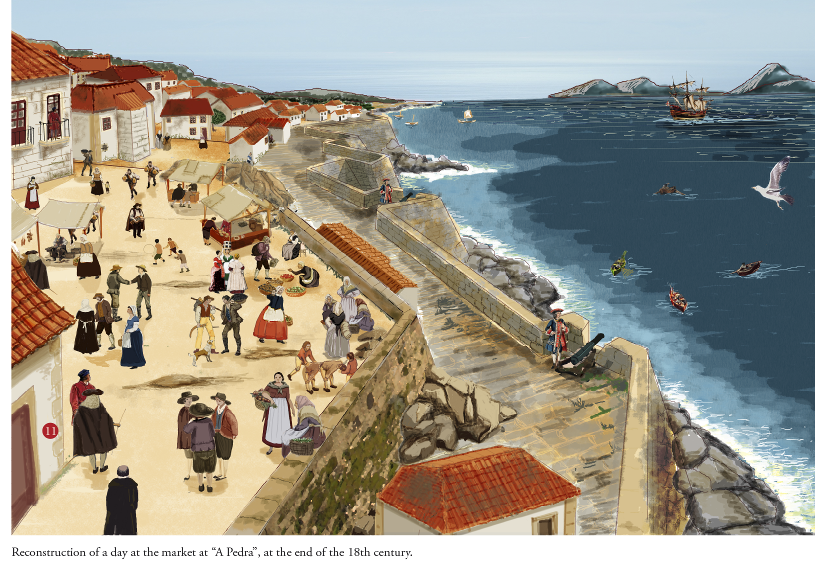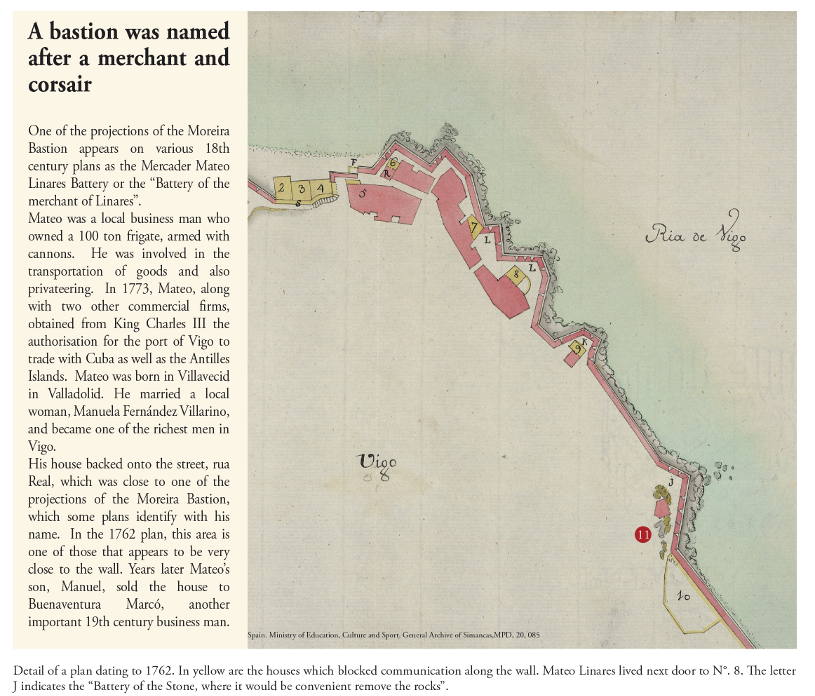Historical Heritage
Vigo's town walls were built despite the difficulties
In the middle of the 16th century Vigo was an important stopping point on the trade routes between Northern Europe and America. It was a dynamic town with a growing population, including foreign merchants. The defences that were needed then were constructed a century later, when the town had become impoverished and its economy stagnant.
During the Medieval period, Vigo was just a small settlement based on fishing and cultivation. Later, with the discovery of America, French, English, Dutch and Portuguese ships used the port as a stopover. A petition was made to the King to grant permission to load and unload foreign ships, just like in the towns of Baiona and A Coruña, which had royal jurisdiction. However, the request was denied, due to, amongst other reasons, the lack of defences.
It wouldn’t be until the end of the century that royal engineers came to Vigo to draw up plans for the town’s defence. But still years would go by until the walls were erected. The war with Portugal and the attacks by corsairs were the final catalysts for the defences to be built. In fact work began before the crown had approved the costs, most likely paid for by the town and the Kingdom of Galicia.

It was 1656 and Vigo was experiencing one of its worst periods in its history. A reduction in production and the obligation to send men and resources to fight for the king had impoverished the town and many inhabitants had left.
With the building of the new defences, Vigo became a fortified town with a permanent garrison. When the soldiers arrived they were dispersed amongst the local inhabitants who had to take them into their homes or pay for a boarding house. The local people took in whole companies of soldiers, adding yet another financial burden to the hard times they were facing.
The town began to recover at the beginning of the 18th century, after suffering a series of poor harvests, and the impacts of the Battle of Rande (1702) and the invasion by the English (1719) which destroyed a number of houses and storerooms, and damaged the town walls.

A Pedra, the social centre of the town, was protected by the town walls
In the Medieval period the local inhabitants of Vigo lived scattered between the coast and the La Ladeira, the lower flank of Monte do Castro. As the town grew, various districts were created. A Pedra, between the O Areal and O Berbés districts, became the social centre of the town.
A Pedra was in a prominent location in Vigo. From A Pedra, the land dropped away towards O Areal and O Berbés districts. This open space, with its rocky outcrops, was a hub of local activity. It was close to the church, the town hall, the hospital for the poor and pilgrims and the largest residences in the town. A market took place here where the people met and carried out their daily business. On New Year’s Day the guilds elected here two representatives who would represent them at municipal council meetings.
When the town defences were built the waterfront was enclosed by the walls. Various bastions were built projecting out from the walls over coastal outcrops. The line of the walls was adapted.

The A Pedra Bastion was built in this area. The land rises up a steep slope with overhanging rocks from the bastion walls up to the church. Years later these rocks were removed and a viewing platform was built. Originally the bastion had a simple plan with a “rediente” or two sided projection. However, over time and after repairs to the walls, its final form was much more complex.
There were a number of bastions between A Pedra and the end of the coastal section of the wall: the Miseria, Mercader de Liñares and Berbés Bastions.

Concello de Vigo
Praza do Rei - 36202 - Vigo (Pontevedra) - Teléfono: 010 - 986810100


